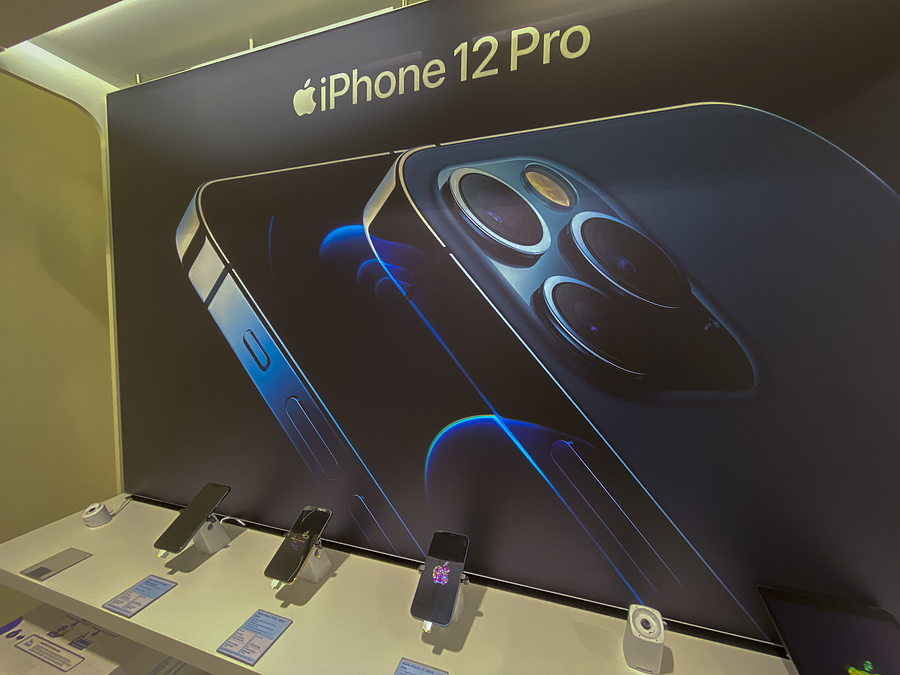Apple recently introduced the new iPhone 12 series featuring new technology. But how much difference is there between the iPhone 11 series and the new iPhone 12 series? We asked Mark Spoonauer who wrote a lengthy review for Tom’s guide.
There are plenty of upgrades to be had with the new iPhone 12 over the iPhone 11. Here are some new features:
- There are four iPhone 12 models, compared to three for the iPhone 11
- 5G connectivity across the board
- Every iPhone 12 packs an OLED screen
- A faster new A14 Bionic chip
- A powerful LiDAR sensor
- The iPhone 12 Mini is a new 5.4 inch item
The iPhone 12 mini starts at $699. The regular iPhone 12 costs $799. Both come with 64GB of storage standard; 128GB costs an extra $50, while 256GB costs an additional $150.

The iPhone 12 Pro and Pro Max start with 128GB of storage and cost exactly what the iPhone 11 Pro and Pro Max do: $999 for the smaller model, and $1,099 for the larger one.
In keeping with tradition, Apple is retiring the 11 Pro range while preserving the standard iPhone 11 on the market. That device used to cost $699; it now starts at $599.
The biggest design change is the Ceramic Shield display on every series12 model. Apple promised four times the drop performance compared to the 11 series.
The iPhone 12 and 12 mini come in five colors (black, white, Product Red, blue and green), while the iPhone 12 Pro and Pro Max come in four (graphite, silver, gold and Pacific Blue).
All four iPhone 12 models will feature Super Retina XDR OLED displays like the iPhone 11 Pro, while the iPhone 11 offered an LCD screen. There are several benefits of OLED vs LCD, including deeper blacks, more vibrant colors and wider viewing angles. Overall, the switch to OLED represents probably the biggest improvement or positive difference an iPhone 11 user is likely to appreciate in moving to an iPhone 12.
Apple is utilizing a wider ƒ/1.6 aperture for the primary camera in every iPhone 12, as well as a new seven-element lens design that is said to markedly increase the quality of photos, particularly in medium- and low-light scenarios. The iPhone 12 Pro Max in particular sports a larger image sensor with Sensor Shift image stabilization technology, and its telephoto lens achieves 2.5x optical zoom. That’s a step up from the 2x zoom of the iPhone 11 Pro, 11 Pro Max and 12 Pro models.
The iPhone 12 range can use Night Mode and Portrait Mode on all cameras, across the front and back. And all devices in the family can achieve 10-bit HDR video recording with Dolby Vision, though the iPhone 12 Pro and Pro Max can do this at 60 frames per second, as opposed to 30 fps for the regular iPhone 12.
The iPhone 12 Pro and Pro Max also have a feature called “ProRAW“. While typical RAW images don’t work on smartphones because of all the image processing phones have to do, Apple’s system blends the two together – shooting high quality, uncompressed RAW files with some image processing on top.
While the iPhone 11 series was strictly 4G, all four iPhone 12 models employ 5G connectivity. Although the current 5G network is not as robust as the carriers would make you believe.
Battery life on the new 12 series was disappointing. The new batteries have shorter battery life than the 11 series and it is even worse when 5G was turned on. And the new 12 series lacks a charger. You only get a USB-C lightning cable. Guess you can use your old charging brick or spend $39 for a new brick.
The best news for iPhone customers is that the new 12 series is the same size as the 11 series. As a result, NuShield can immediately offer screen protector films to cover the new 12 series.
NuShield offers the Triple A anti-glare screen protector film that eliminates reflections indoors and shaded areas. For those who spend a lot of time outside and use polarized sunglasses we recommend our DayVue anti-reflective film that works even in bright sunlight. These films are easy to install without the use of liquids and bubbles can be pushed aside using your finger or a credit card.
Overall, there are only a few differences between the two series which includes the 5G service and better photography performance. If you have an older phone you might want to jump to the 12 series, but if you have an 11 series you might want to think twice about upgrading.
NuShield supports many phones currently on the market along with tablets and other larger devices. Find your phone here (https://nushield.com/device.php?apptypeid=Phone)
